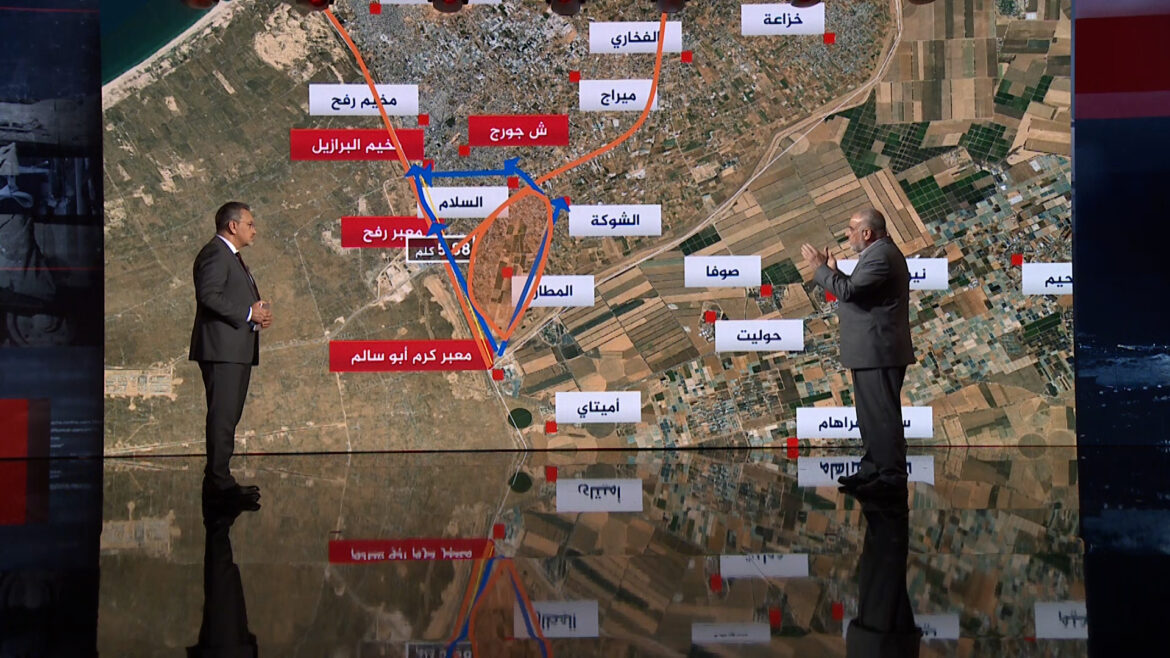Israeli Army Radio said that army forces advanced deep into the city of Rafah, south of the Gaza Strip, and became in the Brazil neighborhood, and occupied two-thirds of the Philadelphia axis (Salah al-Din axis).
In this context, the military and strategic expert, Colonel Hatem Karim Al-Falahi, explains that what is currently happening is an Israeli annexation operation along the border strip with Egypt, stressing that the Philadelphia Strip is not suitable for defense for the resistance.
Al-Falahi added – during his analysis of the military scene in Gaza – that the Philadelphia axis is a border area for entry and exit purposes, and there cannot be military sectors in it, according to the peace treaty between Egypt and Israel.
He pointed out that the ground operation in Rafah is being expanded and increased in depth after Israeli officials approved the plans, revealing the presence of 4 brigades operating in Rafah within a narrow geographic square.
He stated that the Rafah operation had begun from the Rafah crossing with an incursion into the eastern regions – which are agricultural areas and devoid of population or urban density – indicating that the resistance was nonetheless present and inflicted great losses on him.
Jabalia operation
Regarding the Jabalia operation in the north, the military expert said that the nature of the Israeli forces in the camp gives an indication that a special operation will be carried out in the region, ruling out its success in reaching the detained prisoners or prominent resistance leaders.
Al-Falahi believes that the operation aims to search for “valuable targets” and is not related to the issue of missiles or militants, citing Israel’s announcement a few days ago to recover the bodies of 4 prisoners.
He described the progress of the operation in Jabalia as slow, as the occupation forces are suffering heavy losses, while the resistance is responding with whatever capabilities it has, indicating that expanding and deepening the operation depends on the occupation’s information to reach some of the resistance’s infrastructure.
He pointed out that the resistance strategy in confrontation is fixed with differences in means and the use of capabilities and tactics within geographical locations, and according to the tactical situation, in addition to the capabilities of the resistance and the possibility of employing them on the ground.
On the other hand, Al-Falahi says that the occupation is seeking to adopt a new strategy to deal with the resistance, in light of the changes occurring regionally and internationally.



